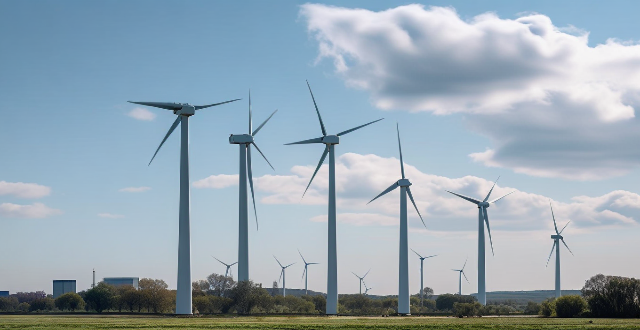Offshore wind energy is a renewable source that generates electricity from wind turbines installed in bodies of water. It offers advantages such as higher wind speeds and less impact on terrestrial environments but faces challenges including high installation costs and environmental considerations. The process involves converting wind power into electrical energy, which is then transmitted to the mainland grid.

Offshore Wind Energy Explained
What is Offshore Wind Energy?
Offshore wind energy refers to the generation of electricity from wind turbines that are installed in bodies of water such as seas, oceans, or large lakes. Unlike onshore wind farms which are located on land, offshore wind farms are constructed in coastal areas, taking advantage of the often stronger and more consistent winds found over open waters.
How Does Offshore Wind Energy Work?
Key Components:
- Wind Turbine: A machine with rotor blades that converts the kinetic energy of the wind into mechanical energy.
- Foundation: The structure that secures the turbine to the seabed.
- Substation: A facility that steps up the voltage from the turbines to a higher level suitable for transmission over long distances.
- Transmission Cables: Electrical cables that carry the power from the offshore substation to the onshore grid connection point.
Generation Process:
1. Wind Power: The wind turns the rotor blades of the turbine, causing the shaft to rotate.
2. Mechanical to Electrical Energy Conversion: This rotation is transferred to a generator where it's converted into electrical energy.
3. Electricity Transmission: The electricity is then transmitted via undersea cables to an onshore substation.
4. Grid Connection: At the onshore substation, the voltage is increased further, and the electricity is fed into the terrestrial power grid for distribution to consumers.
Advantages of Offshore Wind Energy:
- Higher Wind Speeds: Offshore areas typically experience higher and more consistent wind speeds than on land, leading to higher energy yields.
- Space Availability: There is more space available offshore for large-scale wind farms without impacting residential or commercial land use.
- Less Visual and Noise Impact: Being further from shore reduces the visual and noise impact on local communities.
Challenges:
- Higher Installation Costs: Installing and maintaining offshore wind farms can be more expensive due to complex logistics and harsh marine environments.
- Technical Complexity: Designing turbines and foundations to withstand the corrosive effects of saltwater and storms adds complexity.
- Environmental Considerations: Potential impacts on marine wildlife and ecosystems must be carefully assessed and mitigated.
In summary, offshore wind energy harnesses the power of sea winds through sophisticated turbines anchored to the sea floor, transmitting clean electricity to the mainland through underwater cables. Despite its challenges, it offers a promising pathway for countries seeking to increase their reliance on renewable energy sources.